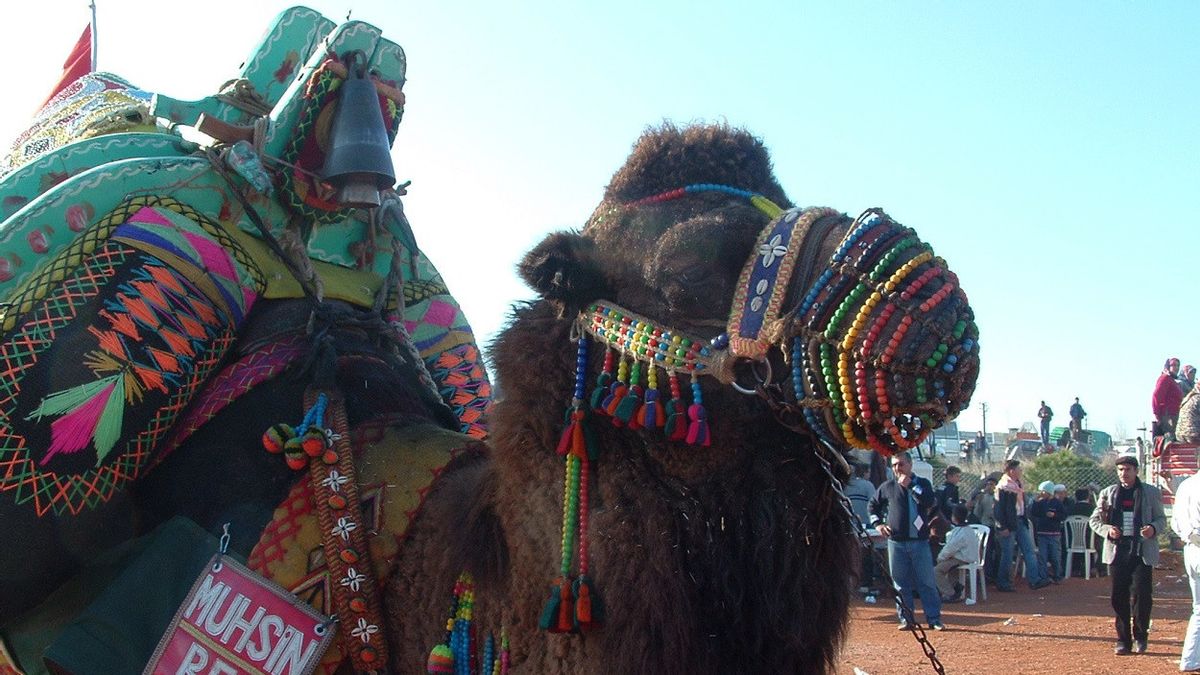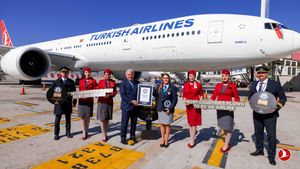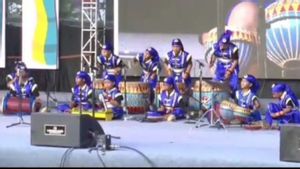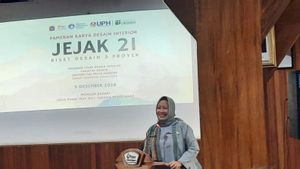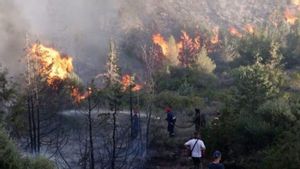JAKARTA - The Selçuk Efes Camel Wrestling Festival, in the Eponymous City, western Province of Izmir, hosted around 20,000 spectators in its 40th edition held over the weekend.
One of the largest events of its kind that showcases the culture of the Yörüks, the nomadic Turks who regard the camel as an essential pack animal for long journeys.
This festival is the high point of similar camel wrestling events that are held every winter in western and southern Turkey, from anakkale to Antalya.
Camel wrestling has its roots in the early 19th century in Incirliova, a city in the Aydın Province adjacent to Izmir, seen as a major place for wrestling. But over time, the festival in Selçuk has overshadowed that, and today, it is considered the 'Kırkpınar' of camel wrestling, much like how the titular oil wrestling event is the most prestigious of Turkish oil wrestlers.
The festival, which broke past attendance records, is still popular and over the weekend, people from all over Turkey flock to Pamucak Arena where camels are served by their owners for wrestling.

The cold weather is no problem for wrestling lovers as they watch camels in colorful saddles roam the arena before the main event.
Some spectators wore colorful traditional costumes such as camel saddles, which reflected Yörük culture. For the audience, camel wrestling is part of an entertainment experience that includes folk dancing and parties around a campfire at the side of the arena.
Amid rapturous applause and the seemingly endless sound of drums and zurna, traditional wind instruments, 162 camels entered the arena. All of them are “Tülü” camels, a hybrid camel born of a dromedary camel and a Bactrian camel.
Male camels compete in four different categories and are trained to use their skills against their rivals. Each was paired according to its weight, and camels with different skills were paired with each other.
Some try to tackle their opponents with foot tricks, while others apply headlock and sit on top of their opponents. Others just push the opponent until he gives up and retreats. The competitor who scares his opponent, makes him scream, or knocks him out is declared the winner.

Each camel is equipped with a muzzle to prevent them from biting each other during wrestling, while their handler stands nearby to separate the camels with ropes and sticks if they get too fierce.
The existence of camel wrestling at this festival is a matter of pride for camel owners, which are animals that are very expensive to care for. Each camel consumes about 5 tons of fodder each year and for wrestling fans, they are part of the family. The valuable animal can be sold for more than 74,000 US dollars or about 1 million Turkish lire.
The saddle is an indispensable accessory for the wrestling camel, and every owner prefers a saddle that has a Yörük cultural motif, with a variety of colors and a small mirror and bell attached.
"This is an ancestral sport for them and is a passion. Life stops in the villages and towns when camel wrestling begins. Everyone rushes to see the festival. We even canceled our wedding plans. It is more of a socializing place for our society, where they eat, drink and stay in touch," explains Bilgehan Oğuz, who heads the camel wrestling association
Camels, which carried Yörüks goods over the centuries as they migrated across Anatolia, are today mostly confined to the rural parts of the country and fewer in number than in the past.
SEE ALSO:
However, camel culture still prevails, especially in western Turkey. In Incirliova, a project is underway to promote the production and consumption of camel milk. The neighboring city of Selçuk hosts a camel farm supported by the European Union Partnership, for Research and Innovation in the Mediterranean Area (PRIMA).
Locals are also increasing the production of camel milk cheese, while the camel meat version of sucuk, a spicy fermented sausage widely consumed in Turkey, is popular in the region.
Incirliova Mayor Aytekin Kaya said they had just started production of camel milk cheese and were working towards mass production. He added that they also received geographic indication marks for camel tribes.
The English, Chinese, Japanese, Arabic, and French versions are automatically generated by the AI. So there may still be inaccuracies in translating, please always see Indonesian as our main language. (system supported by DigitalSiber.id)
